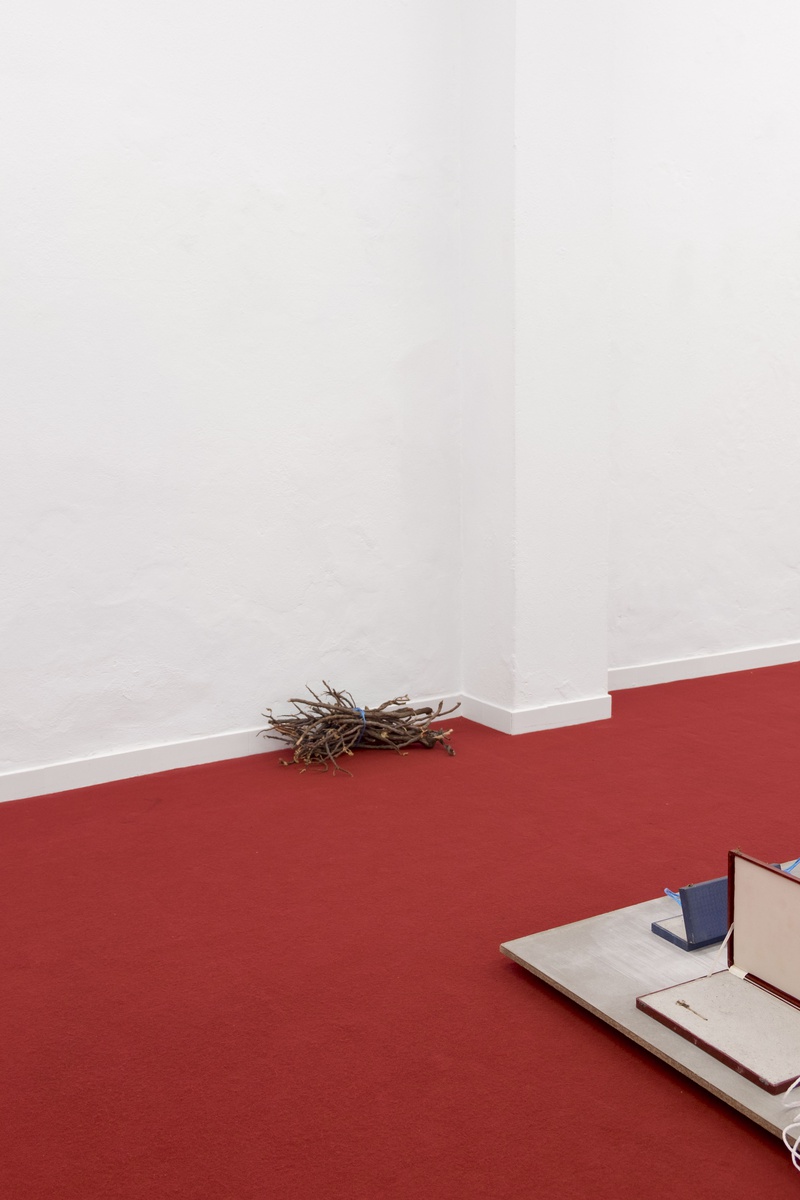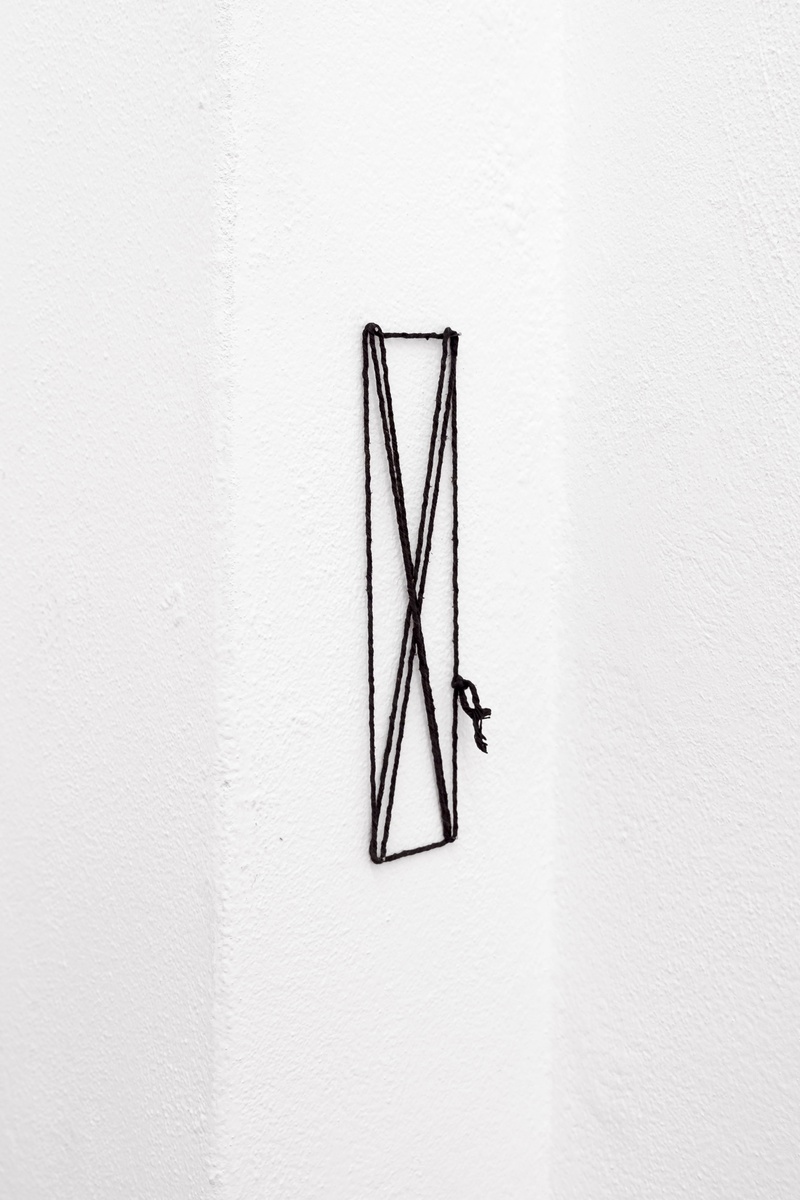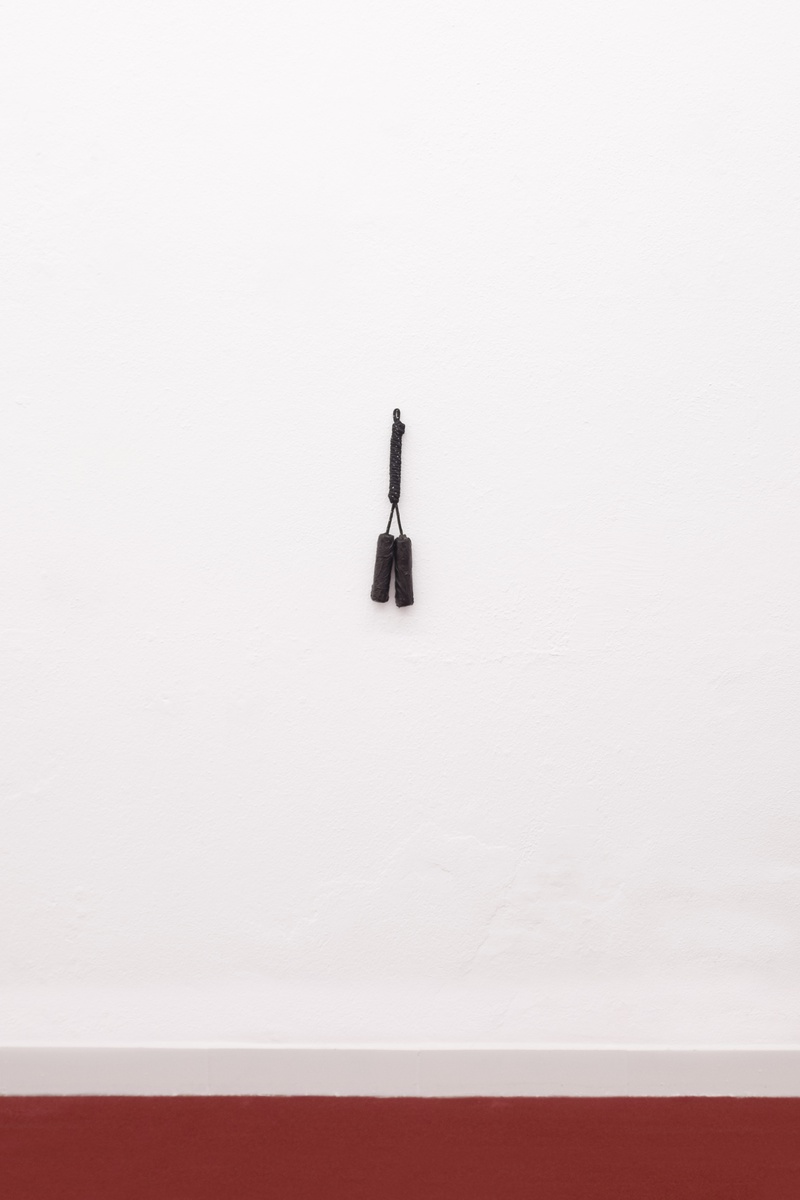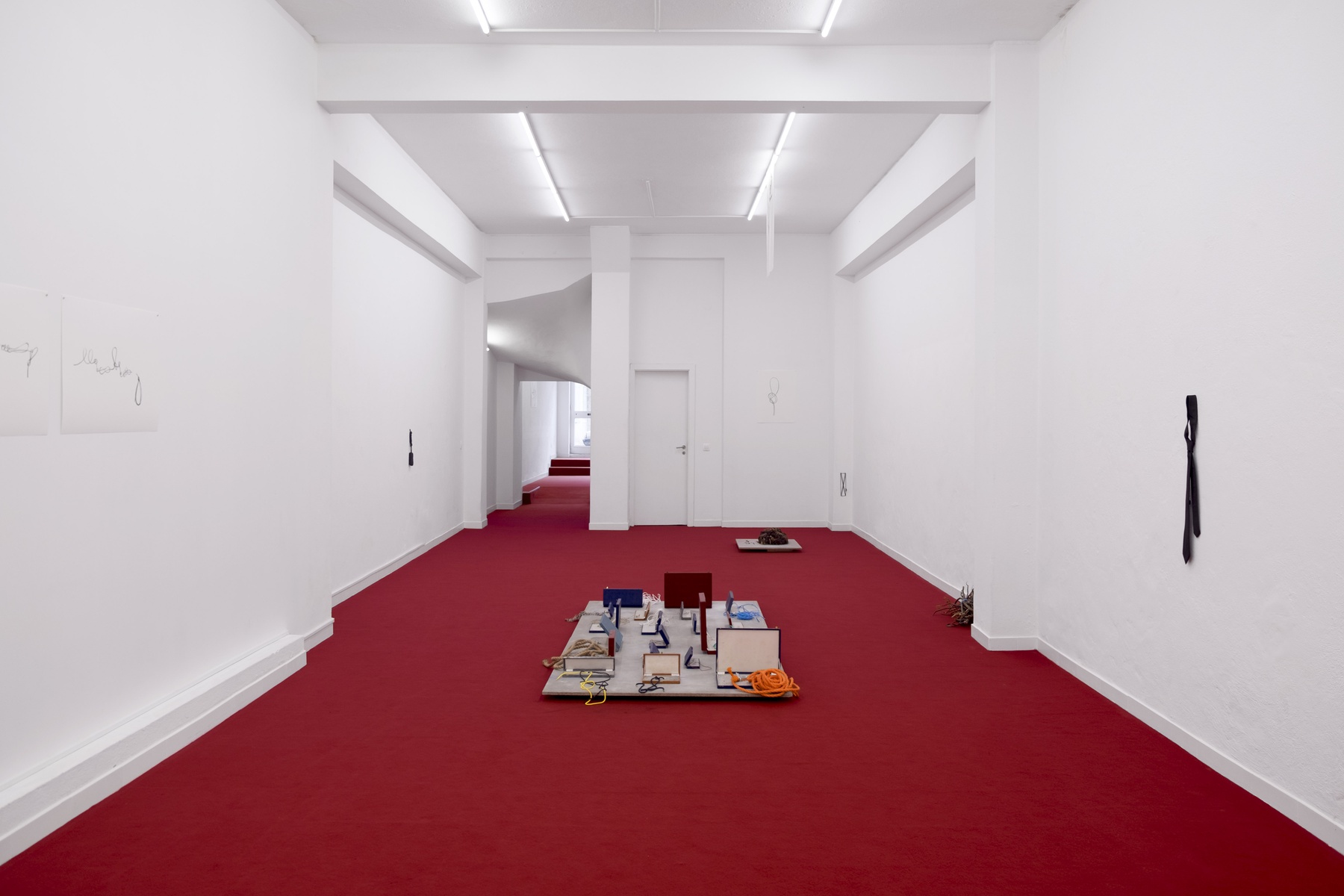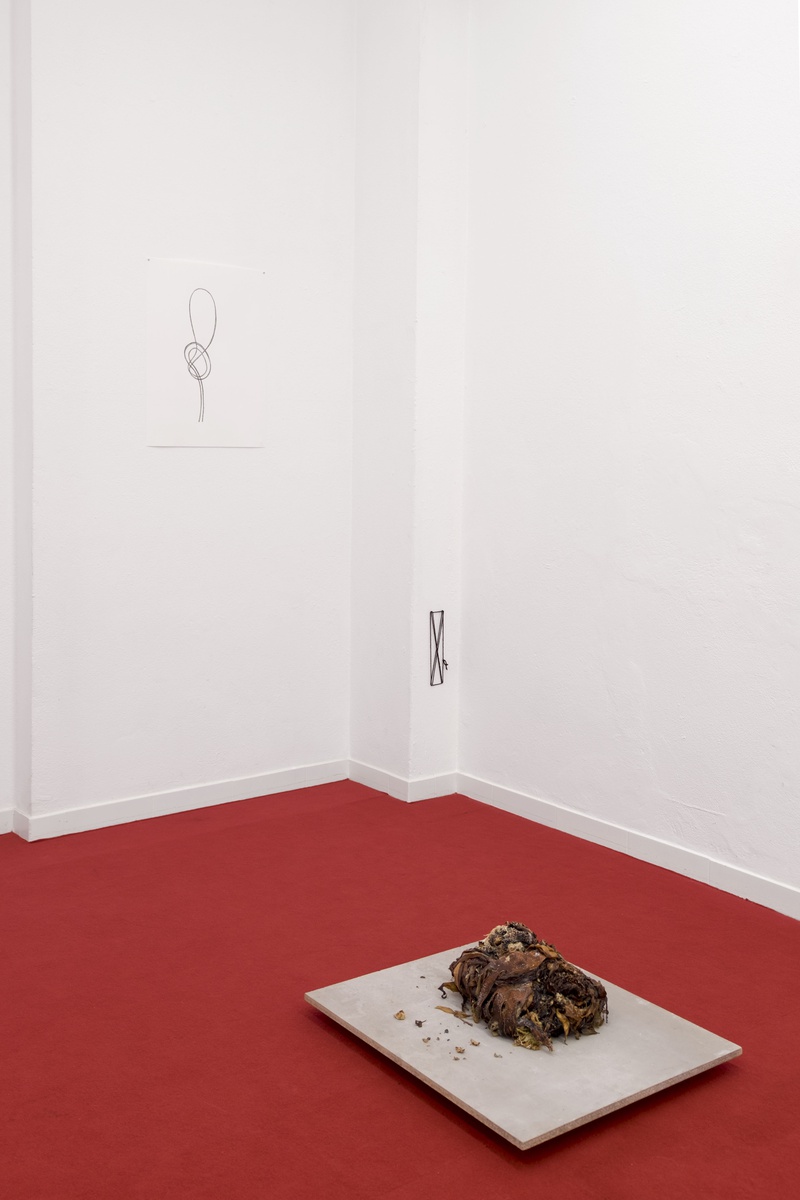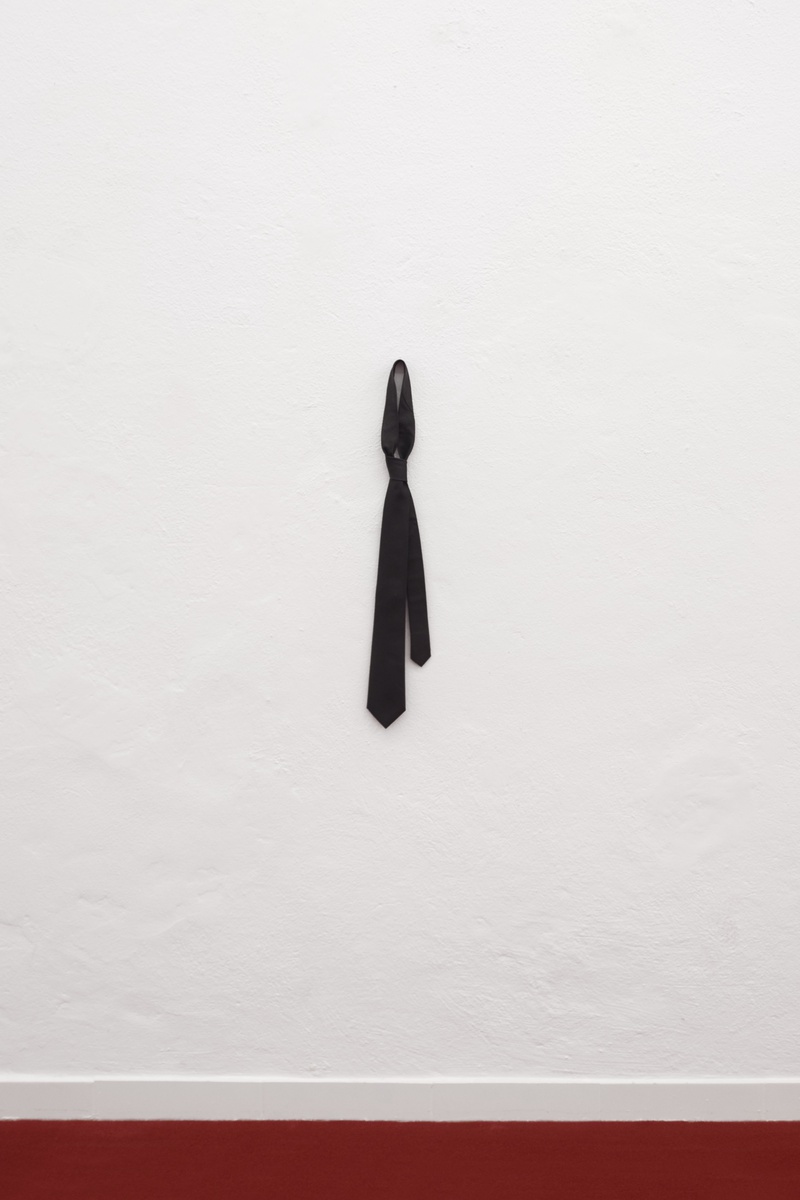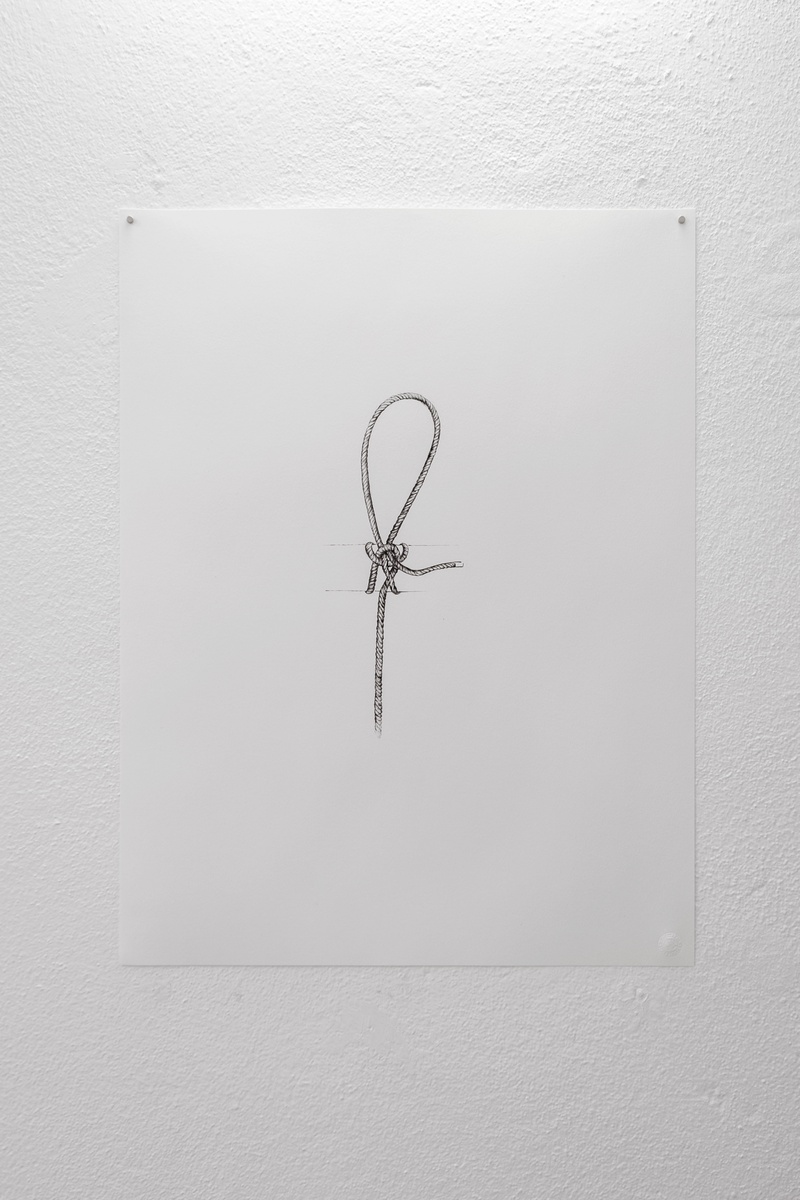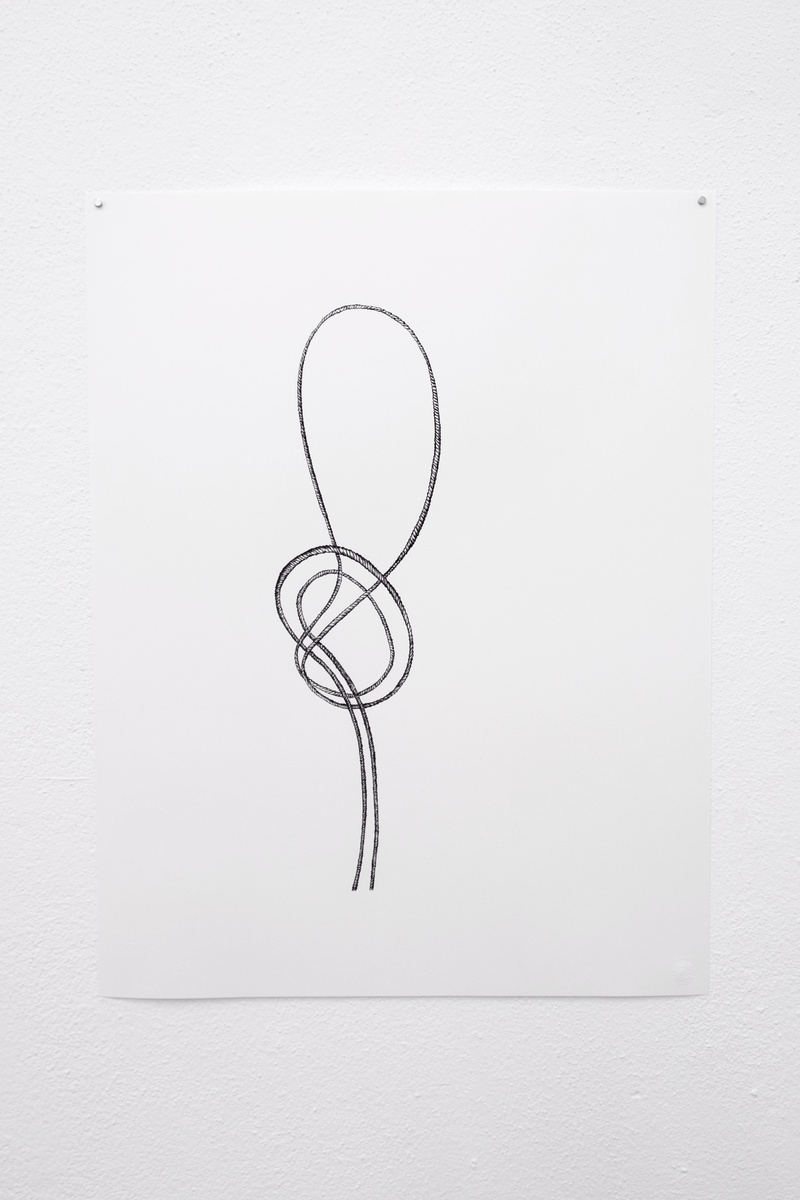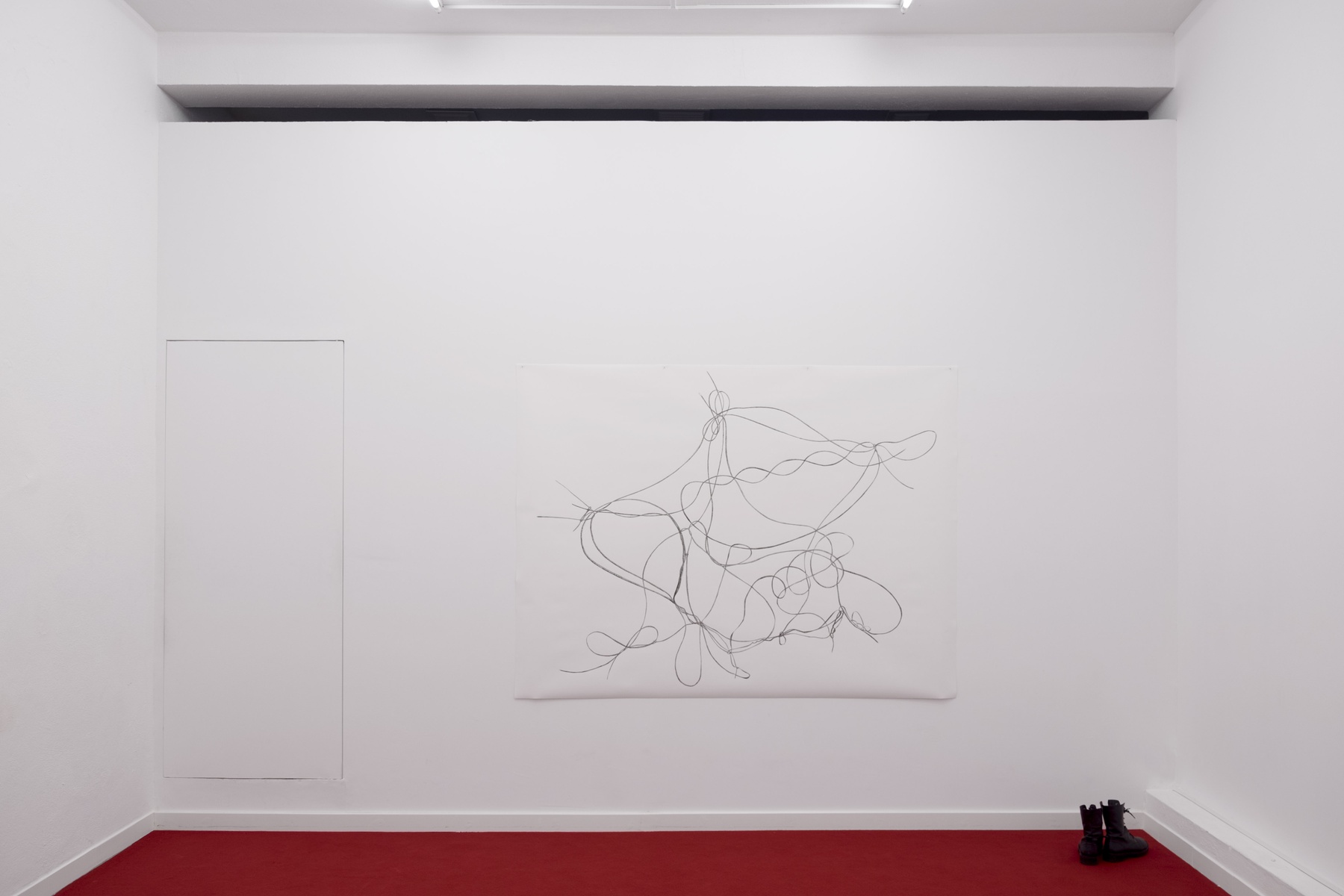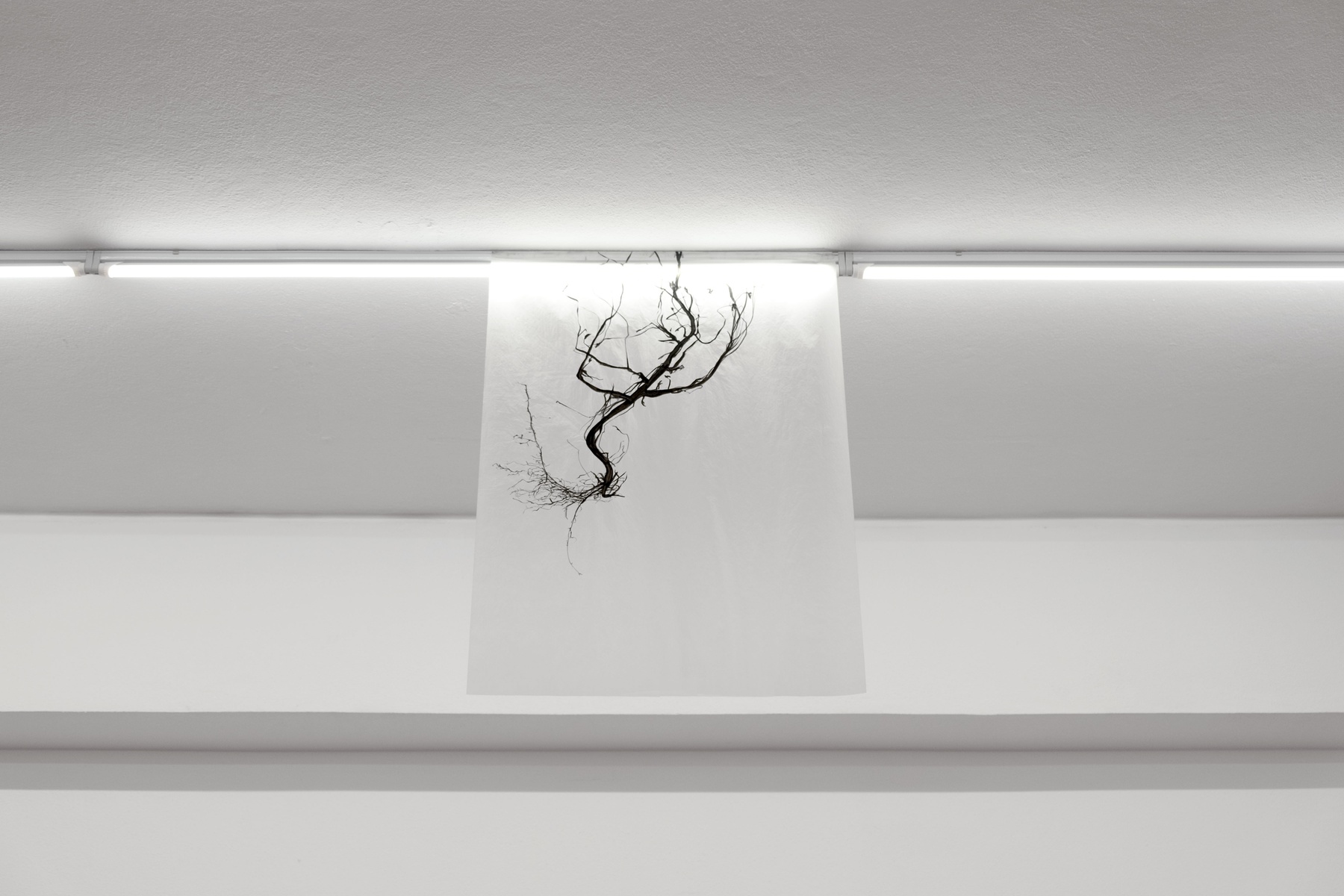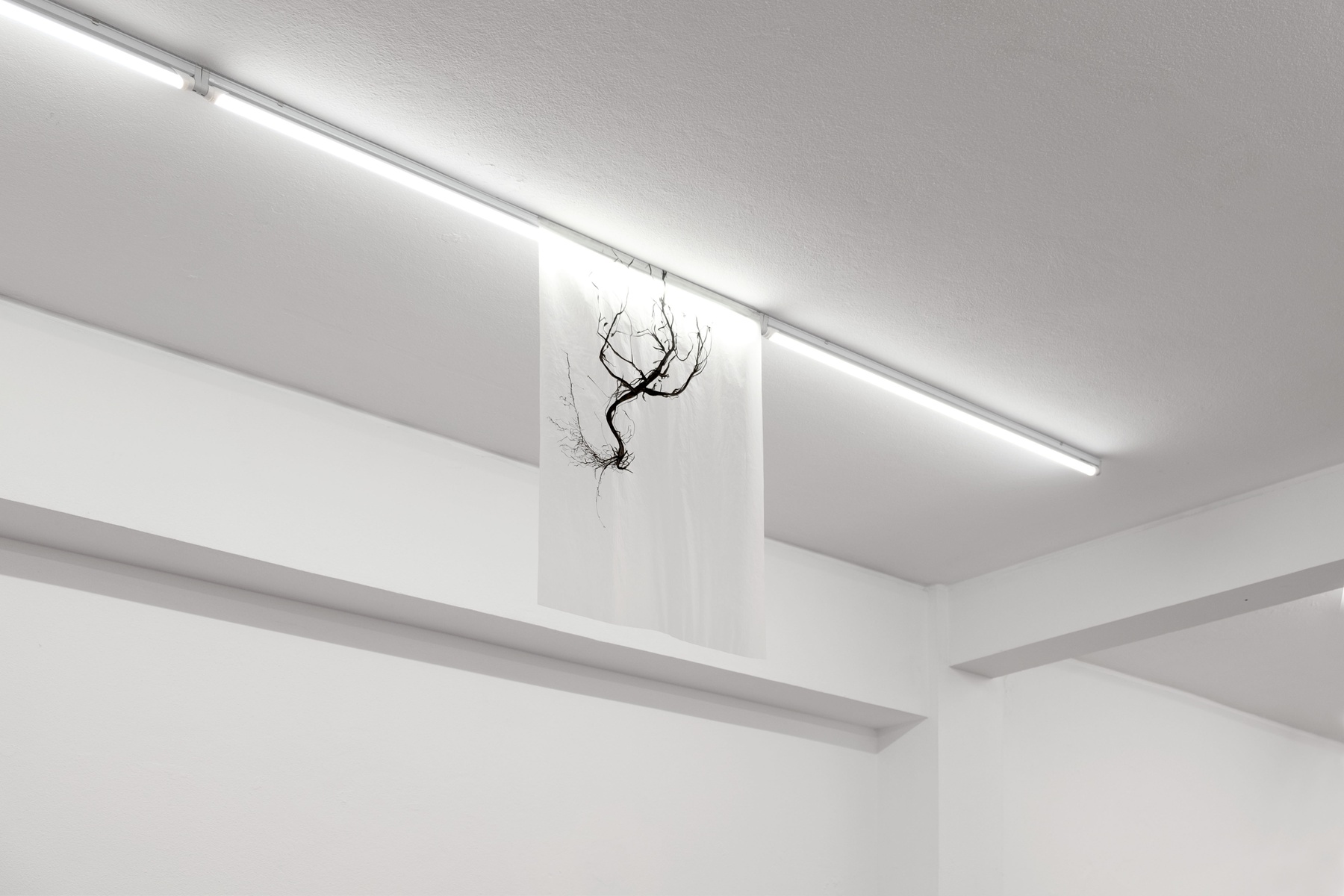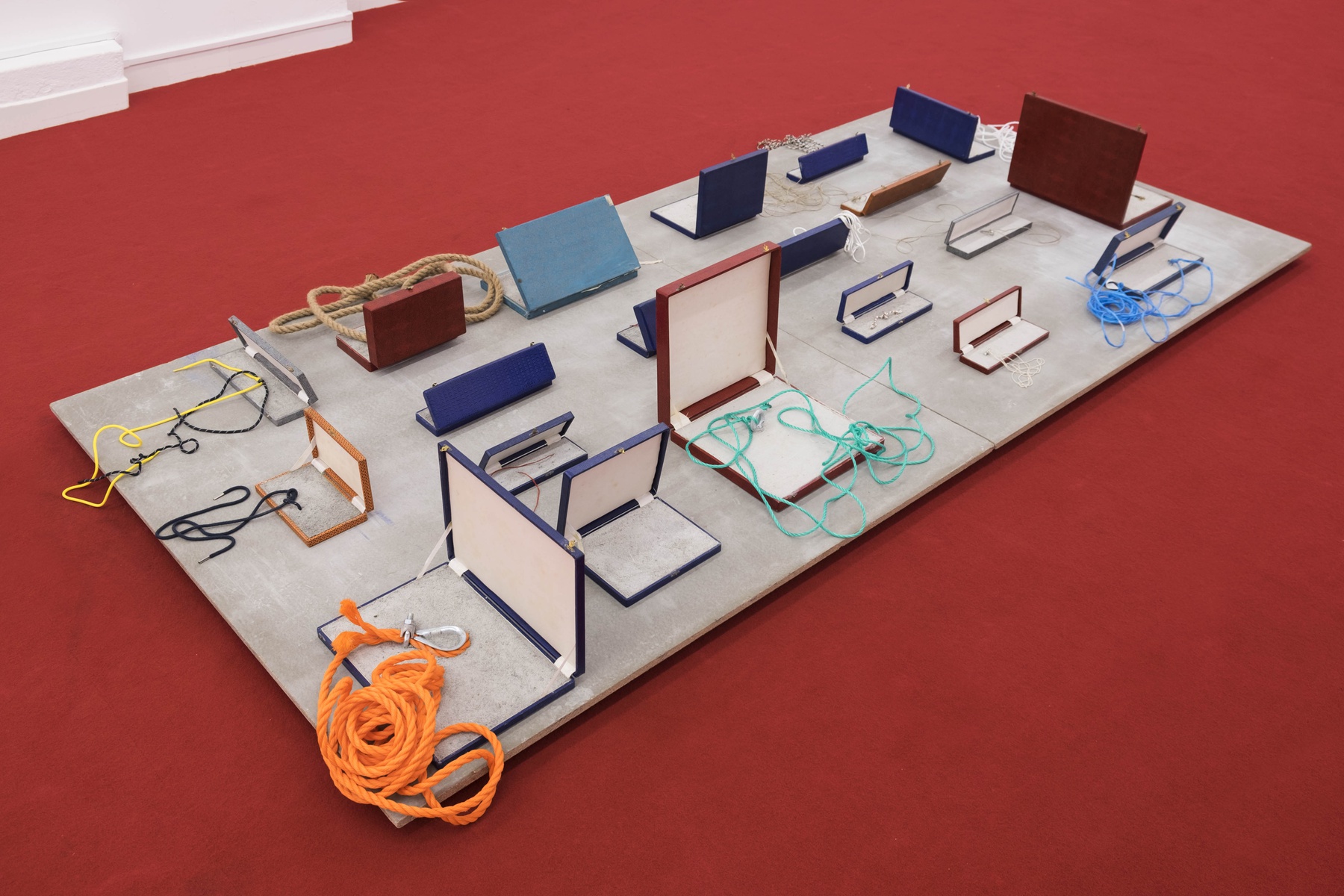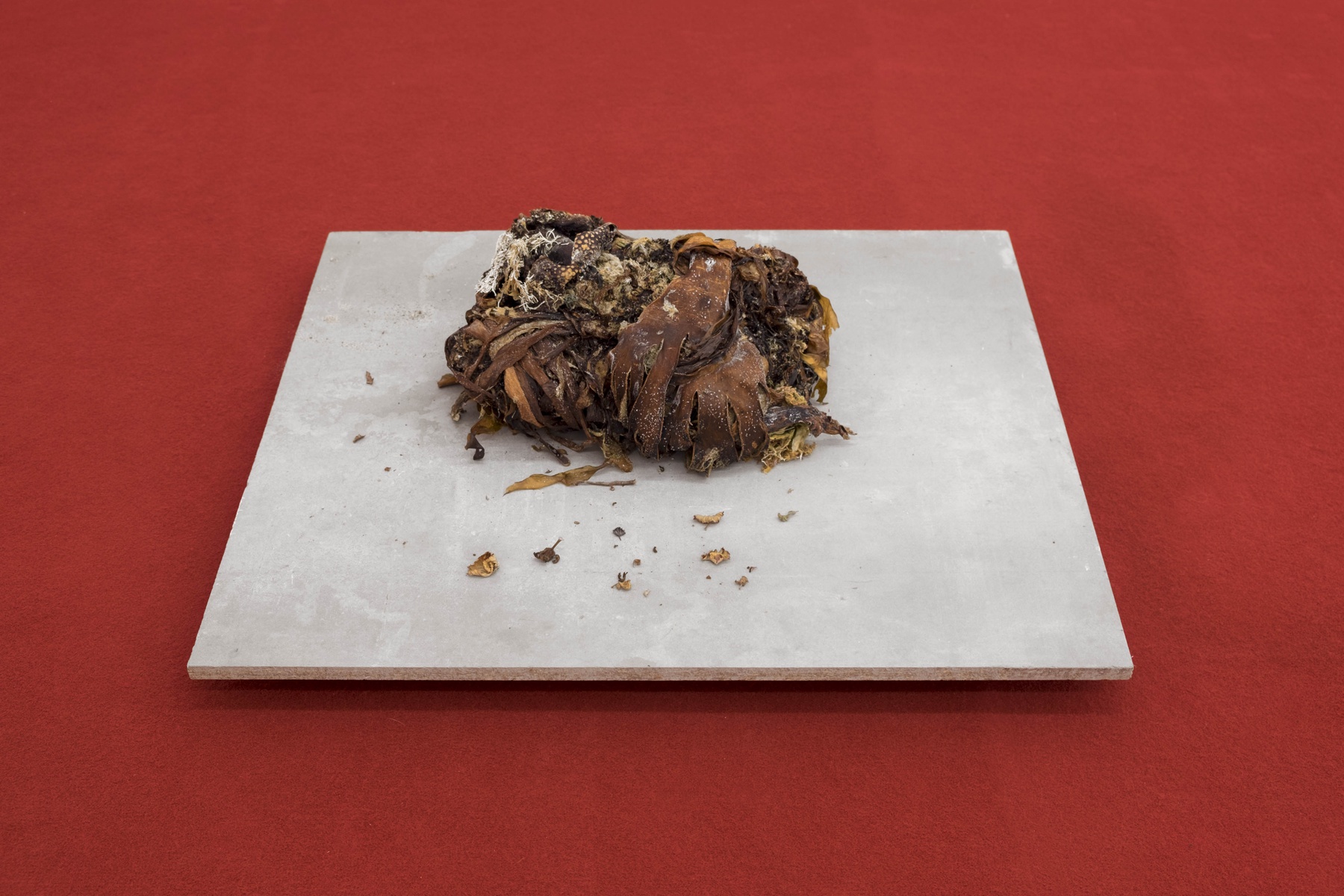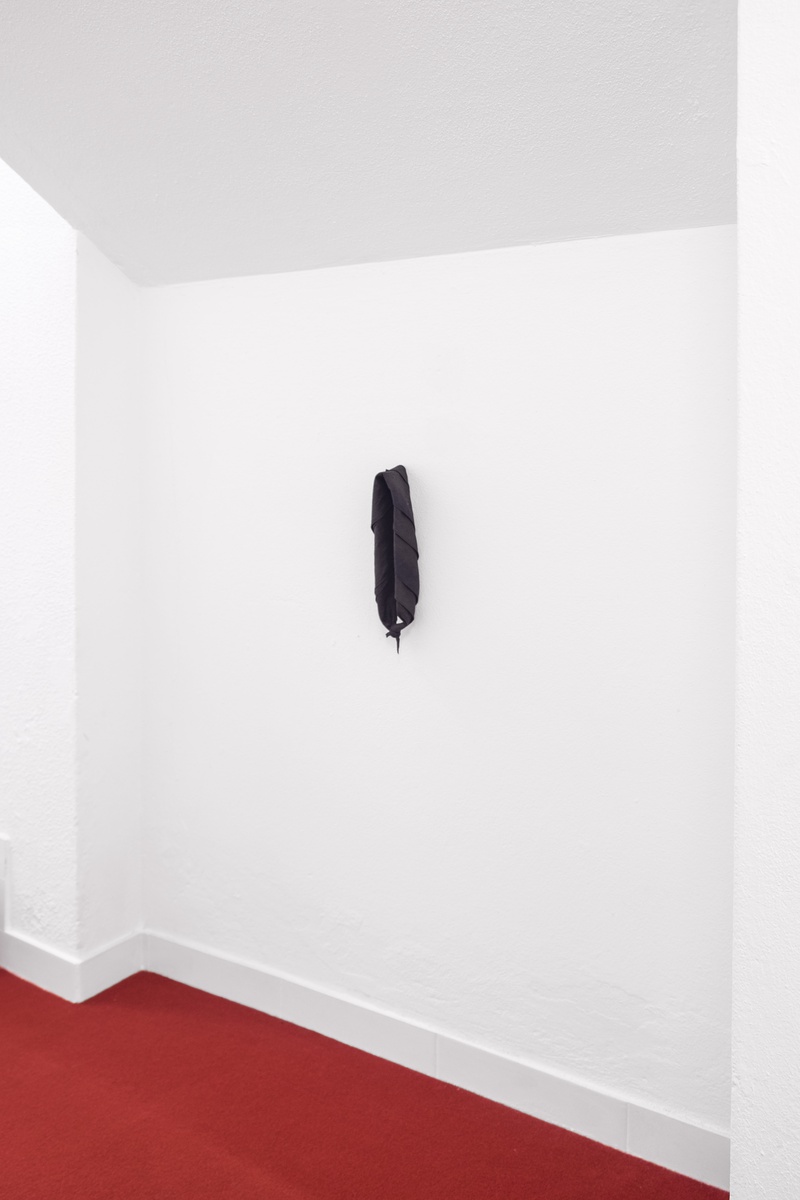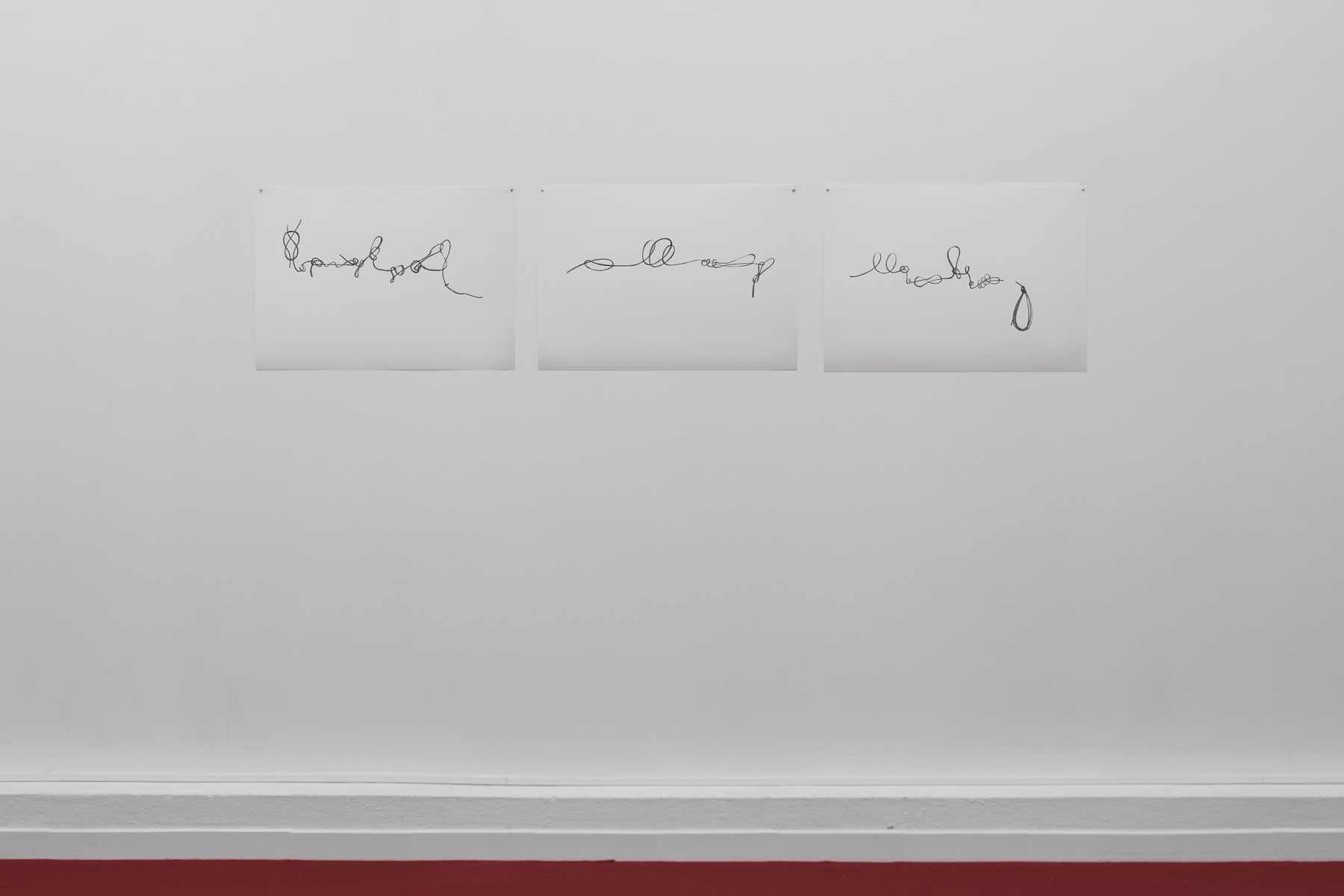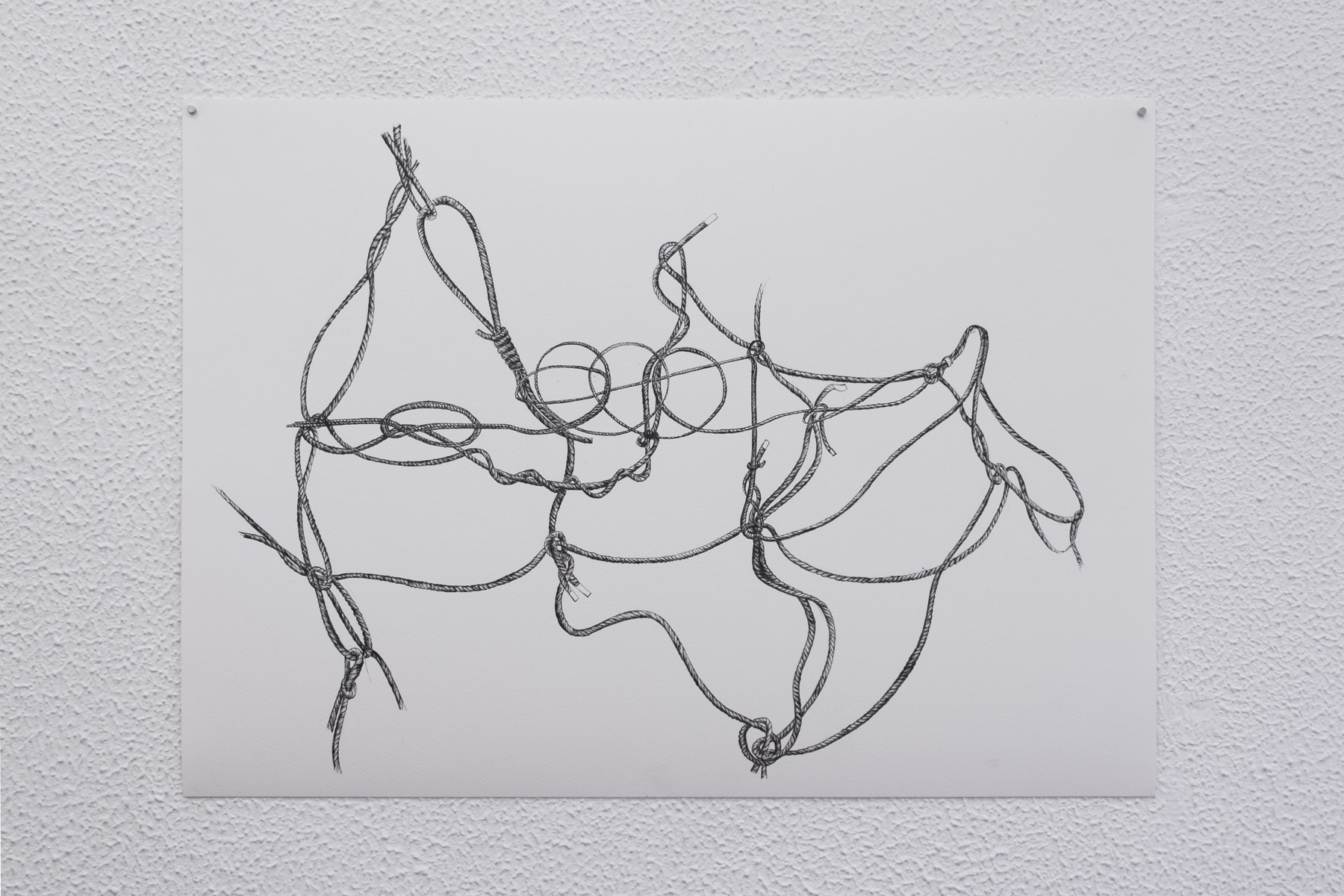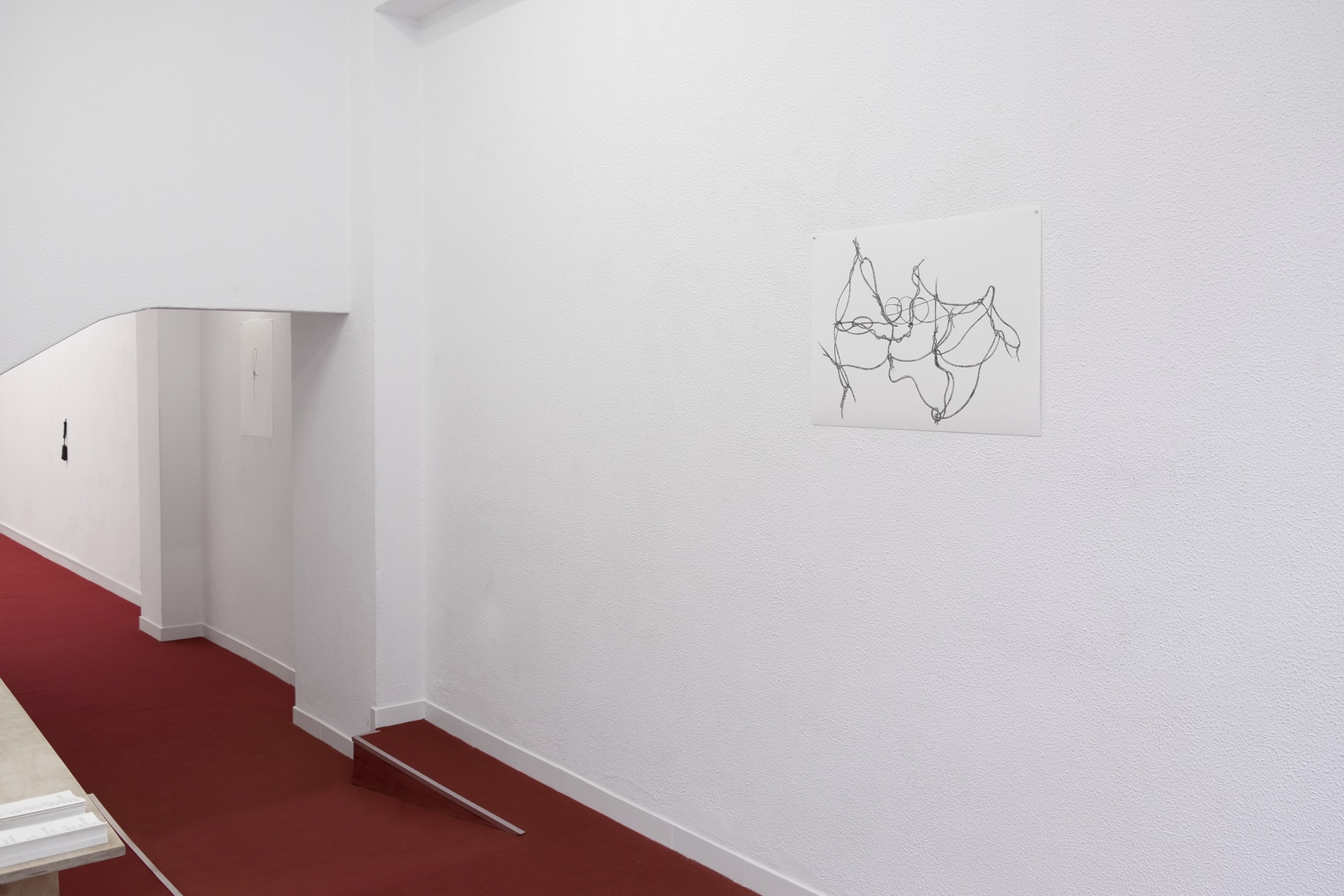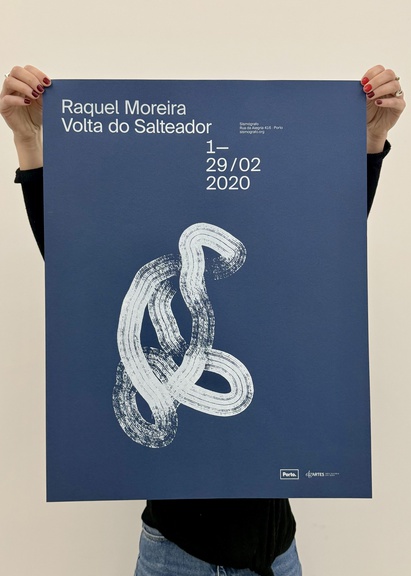Hitch Knot
Exhibition
1 – 29 Feb 2020
Opening:
Saturday, 1 February 2020, 17:00
Talk with the artist:
Sat 29 Feb 17:00
Free admission
To cut the Gordian Knot
The tail tells that Alexander the Great, in one of his campaigns of conquest through Asia Minor, faces a challenge in the city of Phrygia: to untie the knot made a hundred years earlier by Gordius, a feat that until then no one had managed to accomplish. There, attached to a column in the temple of Zeus, was an ox-cart tied with a knot so complex that for years and in vain it had defied the efforts of the bravest kings and warriors to unlace it. Alexander, after analyzing it for a few moments, drew his sword and, with a fortuitous gesture, in one stroke, cut the knot.
If the Gordian Knot required inventiveness to be untangled, the Hitch knot, that gives title to the exhibition, is a knot of quick release. Also known as Highwayman’s Hitch, it is usually used on descents and temporarily holds, suggesting both the possibility of falling and the idea of play. There is a belief that it was used by thieves to quickly release their horses' reins and flee. Although a single pull on the whip is enough to undo this turn, the traction on the middle keeps it safe. Though effective in supporting the weight of a body, it is also dangerous, requiring skill and concentration by those who use it. And what we see in this exhibition is precisely a search, made by the repeated action of tying and untying, of understanding things, case by case, knot by knot.
There is an act of doing and re-doing that comes into being in a set of elements found and built at different times, for this exhibition: as a first clue, a small seaweed found in a basement, which expands to make way for a bigger tangle. Nests made of ropes, sticks and roots are joined together like arms that naturally twist and curl in balls when looking for nutrients, expanding underground or in the water, wrapped by the currents.
Often used to join, finish or mend, there are knots that hang from trees, tied to an iron or stone, buried in the sand. Ropes, threads or braided pieces of fabric which serve many purposes, the most common being the maritime context, but they are also used in agriculture and plant cultivation; in the activity of firefighters and surgeons; in manual works like the macramé technique, in embroidery, in sewing, in jewelery; around boxes, to close and transport them; on ties and shoe laces; in the body, as instruments of pleasure, the shibari; of pain or repression, the gag; in the tents of the market and also in camping; in sports like nets of the playing fields, in climbing, scouting; in children's games, like rope skipping, the blindman's buff game or the Cat's cradle. The latter, also knowned in Japan as Ayatori, is a sequence of positions constructed with thread between the fingers, which can be loosened, returning to the starting position, or continuing its cycle, depending on the skill of the player; a useless and inconsequential activity that disappears without a trace.
Other twists, presented as drawings on paper, made with fountain pen, Japanese brushes and China ink appear as the line is inscribed, becoming thicker until a bigger tangle is created. Some are blind knots that lead to confusion, others refer to the rope around the neck, to the suffocation or a lump in the throat. In them we can also see a kind of invented writing that reminds the millennial Quipus, a still little-known form of Inca communication, made through sets of strings and fibers with different knots, which served to register information, numbers and possibly narratives.
Released from the two-dimensional character of the drawing, the exhibition is also composed of a set of twenty cemented boxes. The grout that fills them is made with river and sea sand, each of which contains hooks and knots. Transporting the geographical context where they were conceived to the exhibition space, we can see them as small pieces of ground, or topographical exercises, stored in reused boxes, which in time will have served to keep valuables. Now, each one suggests metaphors for other knots, some made of fresh water, others more sourer, made of salt water; testimonies of passages, new commitments or broken ones.
In this exhibition, its emphasized once again a way of doing, guided not only by repetition as a form of understanding, but also by the reference to an absent body, and which in previous works has revealed itself in other ways, like the grattage on photography. This body is now presented in the form of props: a blindfold, already used, proposes not only a game, but a different reading on the presented objects, more tactile, which can escape the inattentive gaze; the jump rope, which can be both childish and tragic, is presented as a tool to propel the body from the ground, who knows, to a precipice; a tie, with the diameter of a neck and a pair of boots, left in the corner. These elements, which were painted with the same ink as the drawings, gain the weight of disappearance through the black that covers them. And perhaps the ropes depicted on paper can be the interpretation of a body, or of its entrails. And, with the same provenance of the ink, the Chinese saying comes up and proposes: Before you start the task of changing the world, go around your own house three times.
Raquel Moreira (Porto, 1983), is a Phd student in Contemporary Art at the College of Arts of the University of Coimbra. His training includes a master's degree in Artistic Studies - Museological and Curatorial Studies (FBAUP), a degree in Visual Arts - Multimedia (FBAUP) and a degree in Asset Management (ESE-IPP).
She has been regularly presenting his work since 2010, in solo and group exhibitions, in spaces such as Casa Tait, Casa do Médico, FBAUP Museum, KubikGallery, José Rodrigues Foundation and Galeria do Sol (Porto), Lugar do Desenho (Gondomar), Cerveira Biennial, Colégio das Artes Gallery and Círculo de Artes Plásticas (Coimbra).
She develops her professional activity in the area of cultural production since 2006, having collaborated for nine years in organizing exhibitions at Solar - Cinematic Art Gallery and in the production of Curtas Vila do Conde - International Film Festival and, occasionally, in carrying out activities in different educational institutions. She currently works as a teacher at the School of Education of the Polytechnic Institute of Viana do Castelo.
Exhibition
1 – 29 Feb 2020
Opening:
Saturday, 1 February 2020, 17:00
Talk with the artist:
Sat 29 Feb 17:00
Free admission

